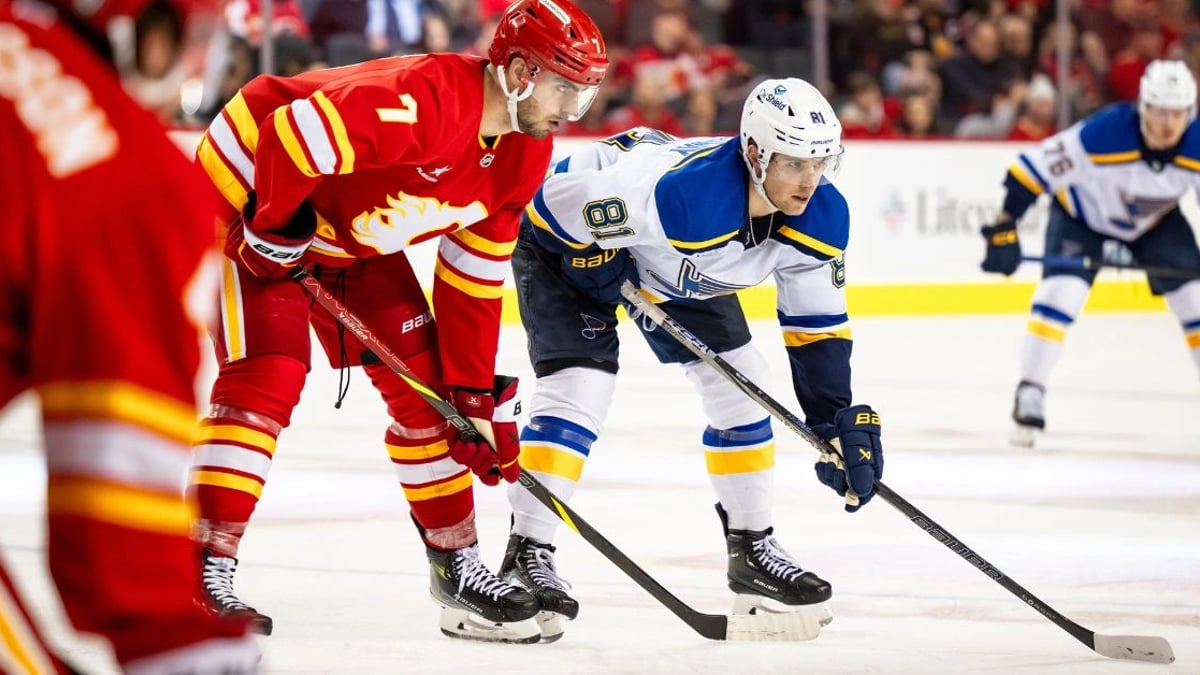Hockey Betting Guide: The Basics of NHL Betting

There’s no other sport quite like hockey—and from a sports betting perspective, that makes for several interesting bet types and strategies. Compared to sports like football or baseball, NHL games are low-scoring, but the pace is lightning-fast. The puck constantly moves up and down the ice, but each game has relatively few major turning points.
You’ve got the standard spread bets (puck lines), moneylines, and totals, but you can also find more niche markets. The low number of goals per contest makes live betting extremely exciting, with lines shifting dramatically every time the score changes.
Add it all up, and you can see why the coolest game is a hot ticket.
- #ad. 18+. Gamble Responsibly. Gambleaware.org. Must be 21+ to participate (18+ in KY). Gambling problem? Call 1-800-GAMBLER (CO, IL, IA, KY, KS, LA, MD, NC, NJ, OH, PA, TN, VA). Call 1-800-NEXT-STEP (AZ). Call 1-800-9-WITH-IT (IN). Deposit required. Paid in Bonus Bets. Bets wager excluded from returns. New Customer only. T&Cs, time limits and exclusions apply. Code is for marketing/tracking purposes.
- #ad. 18+. Gamble Responsibly. Gambleaware.org. 21+. New customers in AZ, CO, CT, DC, IA, IL, IN, KS, KY, LA, MA, MD, MI, NC, NJ, OH, PA, TN, VA, VT, WV, or WY (excludes NY). Apply promotion in bet slip and place a $1+ cash wager (min odds -500) daily for 10 consecutive days starting day of account creation. Wager must settle as a loss to earn FanCash equal to losing amount (max $200 FanCash/day). FanCash issued under this promotion expires at 11:59 p.m. ET 7 days from issuance. Terms, incl. FanCash terms, apply—see Fanatics Sportsbook app. Gambling Problem? Call or Text 1-800-GAMBLER, 1-800-NEXT-STEP (AZ), 1-800-9-WITH-IT (IN), 1-888-532-3500 (VA).
- #ad. 18+. Gamble Responsibly. Gambleaware.org. Gambling problem? Call 1-800-GAMBLER (Available in the US) Call 877-8-HOPENY or text HOPENY (467369) (NY) Call 1-800-327-5050 (MA), 1-800-NEXT-STEP (AZ), 1-800-BETS-OFF (IA), 1-800-981-0023 (PR) 21+ only. Please Gamble Responsibly. See BetMGM.com for Terms. First Bet Offer for new customers only (if applicable). Subject to eligibility requirements. Bonus bets are non-withdrawable. In partnership with Kansas Crossing Casino and Hotel. This promotional offer is not available in DC, Mississippi, New York, Nevada, Ontario, or Puerto Rico.
Note: NHL odds are listed in American format (e.g., +200), but may appear as 3.00 (decimal) or 2/1 (fractional) depending on the sportsbook. Examples use U.S. dollars, though the same concepts apply in your local currency.
Types of NHL Bets
The main NHL betting markets are similar to those in other major sports leagues, so sports betting veterans won’t see anything too surprising. That said, there are some crucial differences and things you should remember that are specific to hockey betting.
Here’s a quick overview of the wagers you can make when betting on hockey. (Note that the following markets will also be available for in-play or live betting.)
The Basics
- Moneylines: The most black-and-white of the NHL betting markets, moneylines are simply wagers on which team will win a game. Because of that, the odds for each team can (and will) often be very far apart. If you’ve got a heavy favorite and a significant underdog matching up, you could see lines in the -300 or -400 range for the better squad, with the underdog seeing lines of +250 or longer. If two more evenly matched teams face off, the lines will be closer to -110 or -120.
- Puck Lines: Puck lines are the hockey betting version of what you’d call point spread bets for other sports. They’re designed to even the odds for both teams by incorporating a handicap into the wager. Because of the low-scoring nature of hockey, puck lines are almost always fixed at -1.5 for the favorite and +1.5 for the underdog. Puck lines are never set at a round number, so these bets won’t push. There will always be a winning and losing side of the equation.
- Totals (Over/Under): Totals (also known as over/under) are exactly what the name says—bet on whether more or fewer goals than the line will be scored in a given game. The more talented the offenses of the teams facing off, the higher the total will be set at, but it’ll usually fall between 5.5 and 8 goals. Unlike puck lines, totals betting can be set at a round number or add a half-goal. If an over/under line matches the game's final score, bets on both sides will be settled as a push, and you’ll get your money back.
Specialized NHL Goals Markets
Goal markets are the most exciting, flexible, and predictable part of ice hockey betting. The combined simplicity and profitability make them the perfect hunting ground for beginners and experienced bettors.
The goal markets offered on NHL games include:
- Total goals
- Total goals by team
- Total goals odd/even
- Both teams to score
- Total goals in period 1/2/3
- Player to score
- Next goal/Time of next goal
- Correct score
The sheer variety makes it easy to tailor your bets to match the level of risk and reward in your ice hockey betting strategy.
Total Goals Market
Focusing on the total goals market is a good approach for low-risk bettors or those with a limited tactical and statistical background. Beginners may be skeptical, but most hockey leagues' average goals per game are relatively consistent. Researching team performance in recent games can help you place a smart bet, typically on a market offering odds close to evens.
Dig deeper and seek those that buck the trend to increase value by betting on results outside the NHL average (between 5.5 and 6.5 goals per game). Stats are available on goals scored and goals conceded in a match, too, so players can venture into the "total goals by team" market for longer odds.
Both Teams to Score Market
Another way to boost your takings is to look at the "both teams to score" market. Usually, the answer will be yes, but if you can find the games where a shutout is likely, or build an accumulator (also known as a parlay or multi) with several likely results, you can increase your returns without taking on too much additional risk.
Correct Score Market
For those on the hunt for a long shot, a high-risk approach is to look at the "correct score" market. This is particularly interesting for predicted mismatches where "match winner" and "total goals" markets don't offer much value.
Next Goal Market
Casual players more interested in injecting some excitement—and potential profit—into their viewing experience can look to the live markets. "Next goal" markets are particularly fruitful when you sense a game's rhythm change. Also, look for teams with high power-play conversion rates for an extra boost in a reliable market.
Whether you prefer high-risk correct score plays or safer total goals markets, goal-based betting in ice hockey offers flexibility for every type of bettor.
Other Types of NHL Hockey Bets
- Futures Bets: Futures are wagers on long-term results, often decided throughout the season. Futures can be bets on how a team will do or may be tied to how an individual player performs. The most common NHL futures involve picking teams to win the Stanley Cup, finish with the best regular-season record, or take their division or conference. You can also wager on over/unders for the number of points each team will rack up in the standings. You can bet on players to lead statistical categories like goals, assists, or points, and bet on players to take home awards like the Vezina, Norris, Hart, or Selke awards. You can also place bets on individual players to reach different statistical milestones.
- Prop Bets: Props are bets on whether a specific outcome will or will not happen in a given game. They DO NOT need to be directly related to a team’s overall performance. The most common team prop is how many goals a team will score. Game props include how many goals will be scored in a given period (or the first ten minutes of a period), which team will reach a specific goal threshold first, or even if the game will go to overtime. Player props, unsurprisingly, are centered on stats like shots on goal, goals, assists, points, and saves.
- In-Game Betting: You’ll see big swings in lines and payouts after a team scores, gets a penalty, takes a penalty shot, or suffers an injury. You’ll find most of the same live wager options as you can for pregame markets. Moneylines, puck lines, totals, and a range of team, game, and player props are all available.
- Parlays: Parlays (also known as accumulators or multis) are bets where you combine more than one predicted result (known as a “leg”) for higher payouts. Each result must settle as a win or push for the wager to cash. (Note that if one leg or more pushes, your overall payout will decrease, as if that bet weren’t part of your original parlay.)
- 60-Minute Line: 60-minute lines remove overtime from the equation and will be settled based on the result after the third period. They’re a middle ground between the moneyline and the -1.5 puck line for the favored team, with a higher payout than the moneyline but shorter odds than betting a team at -1.5.
- Grand Salami: A Grand Salami bet is an over/under for ALL the NHL games on a given day. Bettors try to predict whether the overall number of goals scored across every game will be higher or lower than the number a bookmaker sets.
How to Bet on Hockey
Research Games
If you’re interested in betting on a game, the first step is to do a little research. Find out if a team is coming off a long road trip or is well-rested. See how much momentum each side has or how individual players have recently performed. Check out how a team or player matches up against their opponent on a given day.
Many factors can go into your bets, but the great thing is that all the data you need is at your fingertips. Stats, trends, and more are all easily accessible online, usually available for free, and fairly simple to look up!
Sign Up for a Sportsbook
When deciding what site(s) you want to sign up for, you want to consider your NHL betting style and what hockey betting markets are most important to you. If you’re a casual bettor who sticks to the popular markets, you may prioritize app performance and ease of use. If you’re a veteran handicapper looking for niche player props and line shopping for the best payouts, you’ll be more concerned with betting variety and competitive odds.
Before signing up, check out our reviews of some popular NHL betting sites. Signing up is usually fast and easy. You’ll need to fill out some identification info, go through a quick verification process, and set up a payment method.
Create and Place Bets
Now you're ready to place a bet.
Selecting and placing bets on online betting sites is extremely easy. As you make a selection, it’ll pre-populate a digital betslip. That said, always be sure to double-check that:
- You’ve made the selection you want.
- You’ve entered the correct bet amount.
- You know what the odds are.
Key Factors to Consider When Betting on NHL Hockey
You can try to get out in front of the market to lock in a potential payout that may be mispriced; if you can pick up on a trend or tendency that isn’t reflected in the lines for a game, even better.
Momentum and feeling “in the groove” can certainly elevate the play of a particular team or player. While they may not be the sole determining factor in a game, there’s no arguing that they can have a significant effect.
Ultimately, remember that no streak or trend will last forever, but paying attention to them certainly can give you a more informed opinion of how a matchup might play out.
Matchups, Trends, & Rivalries
As with any sport, it’s not about how teams match up on paper. Historically and recently, it’s essential to look at how teams and players have fared against each other.
Does a particular skater have a goalie’s number? Does a team not handle the physicality of another squad very well? Is a team of mostly rookies going to be at a disadvantage going up against a group of grizzled vets? Does a particular matchup lead to low-scoring games or offensive explosions? Does a defensive-minded forward always seem to tally a point or two against a specific team or goalie? Does a team seem to feed off the crowd whenever it faces off against a big rival?
When evaluating any game on the NHL schedule, you’ll want to consider all these factors, past performance, and head-to-head stats.
Remember that using this data and information is not an exact science. However, evaluating and understanding different team and player trends can help you better guess how a particular game or series might play out.
Team Form & Injuries
Unfortunately, injuries always have and will play a significant role in how hockey games play out. As you’d expect, injuries to role players, like checking line forwards, will have less impact on lines and props than an injury to a starting goalie or a defenseman on the top pair. The better sense you have of how healthy a roster is, the more educated decisions you can make about your bets.
More so than in other sports, momentum can substantially affect a hockey team's and individual players' performance. A big winning streak may mean that a team has found the right mix of line combos or that a goalie is riding a hot hand. On the other hand, a losing streak could point to a lack of team chemistry, dwindling confidence, or a series of impactful injuries.
Line Movement
NHL betting lines are not stationary. They’ll move up and down with roster changes, injuries, or heavy money coming in on one side or the other. Don’t be surprised if a line has changed a day (or even a few hours) after you’ve placed your bet.
Referee Trends
While you may see a fair number of penalties in most regular-season games, the trend in the NHL playoffs is for refs to “let the players play.” Referee tendencies matter most in prop markets involving power-play scoring.
They can also influence team totals and game over/unders, mainly if one team relies heavily on the man advantage to generate offense.
Schedules & Travel
The hockey season is a marathon, and an 82-game schedule means that teams sometimes have to play games on back-to-back nights, or even 3-5 games in a given week, with extensive travel mixed in. These factors can take a toll on player performance and may even lead the coach to rest certain players during a stretch like that. You’ll want to be aware of the schedule and the gameday lineup.
Advanced NHL Betting Strategies
- Statistical Analysis: Advanced stats like Corsi (shot attempt differential) and Fenwick (unblocked shot attempt differential) aim to measure how effectively teams are playing, trying to account for some of the “puck luck” that can lead to fluke goals or goals against the run of play. Though no statistic can truly distill how well a team is performing, Corsi and Fenwick attempt to show how a team is truly performing, regardless of the results on the scoreboard.
- Situational Betting: No two teams follow the same path through an NHL season, and remembering that can help set you up for hockey betting success. You could see a pronounced advantage if one team is more rested while another is on the second night of a back-to-back. If one team has a playoff spot locked up, but another desperately needs the points, that could be reflected in both the lineups and the playing speed of the respective squads. Even for individual players, if a traded player is lining up opposite his old team, he may have a little motivation to light the lamp.
- Weather Conditions: While it only occurs a couple of times a year, the weather can greatly impact the tempo and style of play for the NHL’s signature outdoor games. Warmer weather can lead to odd puck bounces and a slippery ice sheet, while precipitation can make puck handling and playmaking tougher.
- Game Tactics: The X’s and O’s come into play quite a bit with hockey and hockey betting. Certain coaches will play more defensively, “trapping” the puck at mid-ice for long periods. Other bench bosses will encourage a free-flowing, attack-minded approach, with less of an emphasis on defensive coverage. Each team's tactics and strategy can give one side a distinct advantage or generally make for a higher- or lower-scoring affair.
Final Thoughts on NHL Betting
The uniquely fast-paced, low-scoring sport creates a special brand of excitement as you make and follow wagers.
Like any sport, many variables can change the outlook for any game on the schedule. And there are plenty of factors that you should consider before placing bets, including talent, momentum, trends, injuries, roster decisions, and more, that can inform your choices.
We encourage you to check out the many resources you can find right here on our site to zero in on the types of hockey bets you’re interested in and what betting sites might be a good match for your betting style, frequency, and budget. Hockey betting is popular for a reason, and we’re here to help you find your skating legs as you get started.
Betting responsibly is key for NHL betting. You should determine a standard bet size that helps your bankroll withstand the natural ups and downs of sports betting. You should do research and bet only amounts that you’re comfortable losing. Stick to those principles, avoid betting impulsively, and you’ll get the most out of your gambling budget.
















